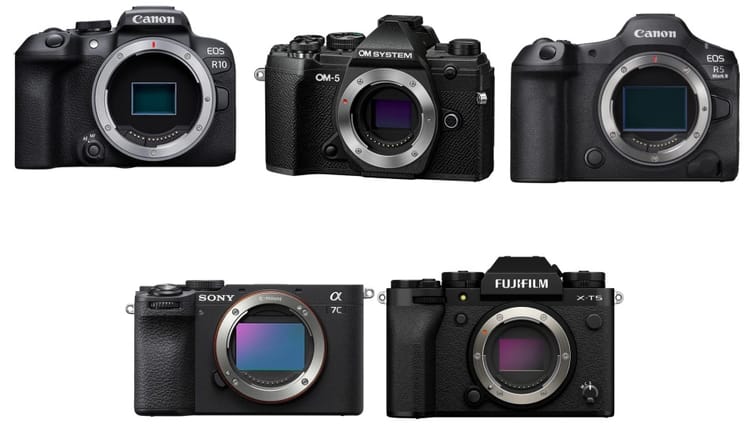The Rise of the Mobile Photographer: Trends and Technologies for 2025
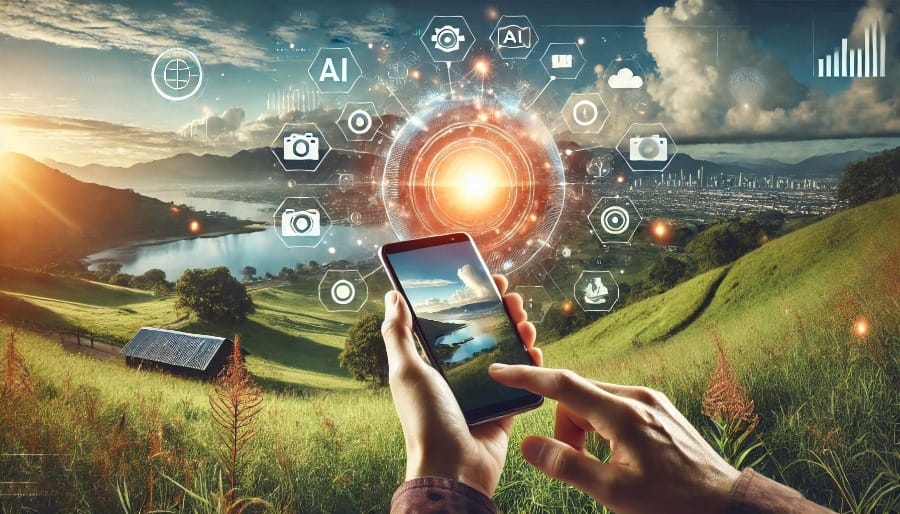
Introduction
In recent years, the world of photography has witnessed a dramatic shift. What was once the domain of professional photographers armed with bulky DSLRs and expensive lenses is now more accessible than ever, thanks to the rapid advancement of smartphone camera technology. The rise of the mobile photographer has fundamentally altered how we capture, share, and interact with visual content. Today, the tools needed to create high-quality images are no longer limited to those with specialized equipment or training. With the smartphone in our pockets, anyone can produce professional-level photographs with just a few taps on a screen.
As smartphone cameras have evolved, so too has the artistry and creativity of mobile photographers. Features like multi-lens setups, computational photography, and AI-driven enhancements have democratized access to advanced photography techniques. These innovations have enabled everyday users to experiment with long exposure shots, stunning night photography, and depth-of-field effects that rival DSLR performance. In 2025, mobile photography is no longer just a trend; it’s a movement that continues to grow and redefine what it means to be a photographer in the digital age.
As we look toward the future, several key trends and emerging technologies promise to further elevate mobile photography. With larger sensors, AI-powered editing tools, and seamless cloud integration, the capabilities of smartphones as powerful imaging tools are expanding rapidly. Moreover, the rise of social media platforms like Instagram and TikTok has fueled the demand for high-quality content, pushing mobile photographers to develop new styles and techniques.
This blog post will explore the cutting-edge technologies and trends driving the rise of the mobile photographer in 2025, offering insights into how these innovations are shaping the way we create and consume visual media in an increasingly mobile-centric world.
Section 1: Evolution of Mobile Photography
Early Days: The Emergence of Camera Phones
The journey of mobile photography began in the early 2000s with the introduction of basic camera phones. These early devices offered grainy, low-resolution images with limited control over settings like exposure or focus. Early adopters primarily used them for casual snapshots, not expecting professional-level results. Mobile photography at this time was an extension of phone functionality rather than a replacement for dedicated cameras. In fact, photography enthusiasts still heavily relied on digital cameras and DSLRs to capture quality images.
As smartphone technology began to develop, so did the capabilities of their cameras. The introduction of higher megapixel sensors, better lenses, and more advanced software algorithms laid the foundation for the shift in consumer behavior. Suddenly, the idea of capturing meaningful, visually striking images with a mobile phone no longer seemed out of reach.
Key Milestones in Mobile Photography
1. The Megapixel Race
A significant milestone in the evolution of mobile photography was the increase in megapixels. Manufacturers began touting higher and higher pixel counts, often associated with better image quality. While the number of megapixels doesn't tell the whole story, it marked a turning point. With smartphones like the Nokia 808 PureView in 2012, which featured a 41-megapixel sensor, users experienced a dramatic leap in image resolution.
Though DSLR and mirrorless cameras still outpaced early smartphones in sensor size, the closing gap in resolution opened new possibilities for the mobile photographer. The convenience of having a powerful camera in one's pocket meant that spontaneous moments could be captured with surprising clarity, something traditional cameras struggled with due to their bulk and complexity.
2. Computational Photography Revolution
The real game changer in mobile photography came with the rise of computational photography. Introduced primarily through flagship smartphones like the Google Pixel series, computational photography relies on software algorithms and artificial intelligence to enhance photos in ways hardware alone cannot. Early examples of this technology included features like portrait mode, which used software to blur the background (emulating the bokeh effect of DSLR cameras), and night mode, which enabled smartphones to capture impressive low-light images by combining multiple exposures.
This development revolutionized mobile photography, allowing everyday users to take professional-looking photos without understanding the technical intricacies of traditional cameras. Computational photography opened the door for a broader range of creative possibilities, as smartphone users could now focus more on composition and less on mastering camera settings.
3. Multi-Lens Systems
Another crucial development in the evolution of mobile photography was the introduction of multi-lens systems. Early smartphones typically came equipped with a single camera lens, limiting their versatility. As the demand for more varied photography options grew, manufacturers began integrating multiple lenses into a single device, each tailored for different scenarios. Ultra-wide, telephoto, and macro lenses were added, allowing users to capture everything from vast landscapes to detailed close-ups.

Apple’s iPhone 7 Plus, launched in 2016, was one of the first mainstream smartphones to introduce a dual-lens system. This setup enabled optical zoom and better depth sensing, giving mobile photographers more creative control. The move towards multi-lens systems quickly became a standard feature in flagship phones, and today, triple- and quad-lens setups are common. This multi-lens approach allows the mobile photographer to replicate many of the functionalities of a professional camera system, all while maintaining the convenience of a smartphone.
The Rise of the Mobile Photographer
As technology progressed, the idea of the mobile photographer emerged. No longer constrained by the limitations of early phone cameras, users began to adopt smartphones as their primary tool for both personal and professional photography. This evolution was driven not only by hardware improvements, like better lenses and larger sensors but also by the integration of advanced software features that simplified the process of taking high-quality photos.
For many aspiring photographers, mobile phones offered an affordable entry point into the world of photography. Rather than investing in expensive DSLR or mirrorless systems, they could develop their skills using the increasingly sophisticated tools available on their phones. Moreover, the rise of social media platforms like Instagram, which prioritized mobile-friendly image sharing, further fueled the growth of mobile photography as a legitimate form of artistic expression.
By 2025, the mobile photographer will have access to even more advanced technology, allowing them to push the boundaries of what’s possible with smartphone cameras. Larger sensors, AI-powered enhancements, and even more versatile multi-lens systems will continue to make smartphones a viable alternative to traditional cameras, solidifying the role of the mobile photographer in the broader photography landscape.
The Democratization of Photography
The evolution of mobile photography has made high-quality imaging tools accessible to millions of people worldwide. The integration of advanced technology, from computational photography to multi-lens systems, has enabled the rise of the mobile photographer. As we move towards 2025, this trend will only continue to grow, with smartphones becoming an even more powerful tool for capturing stunning visual content. What once required specialized equipment and training is now within the reach of anyone with a smartphone, transforming the art of photography forever.
Section 2: Cutting-Edge Technologies in 2025
Computational Photography: Redefining Image Processing
One of the most significant advancements in mobile photography is the ongoing evolution of computational photography. By 2025, the software algorithms behind mobile cameras will be more powerful than ever. These technologies allow smartphones to process and enhance images in real-time, overcoming limitations that hardware alone cannot address. For example, low-light performance will improve dramatically with the ability to capture multiple frames and merge them instantly, resulting in sharp, well-exposed images even in challenging conditions. The use of artificial intelligence (AI) to recognize scenes and automatically adjust settings will allow the mobile photographer to focus on composition, leaving the technical details to the software.

Computational photography is also pushing boundaries in creative ways. Features like real-time filters, portrait modes with improved bokeh effects, and AI-driven post-processing will give mobile photographers more tools to express their artistic vision without requiring extensive editing skills.
Foldable and Modular Smartphones: Expanding Creative Possibilities
By 2025, foldable smartphones will be an essential tool for mobile photographers. The expanding screen real estate allows for enhanced composition, better photo review, and even multitasking while editing. These foldable devices will offer more flexibility, letting users take photos from creative angles and preview them with improved clarity.
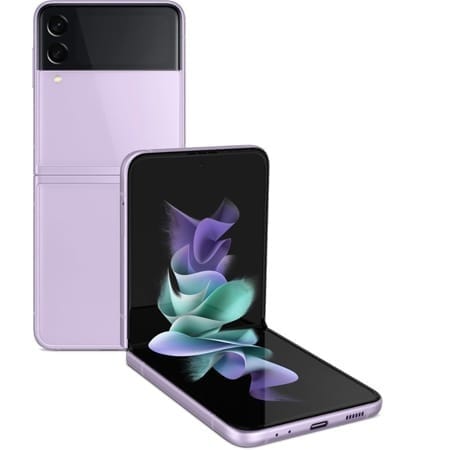
In addition, modular smartphones are emerging as a key trend. With modular designs, photographers can customize their devices by adding specialized camera modules, such as larger sensors or dedicated telephoto lenses. This flexibility enables mobile photographers to tailor their smartphones to specific photography needs, much like a DSLR user might swap lenses for different scenarios. These innovations will bridge the gap between mobile and traditional cameras, making smartphones even more versatile in capturing high-quality images.
Larger Sensors and 8K Video: Elevating Quality and Versatility
Larger sensors are another game-changing trend that will revolutionize mobile photography in 2025. These sensors will significantly improve dynamic range, color depth, and overall image quality, helping mobile cameras compete with entry-level DSLRs and mirrorless cameras. Combined with computational photography, larger sensors will offer unprecedented image quality for the mobile photographer, even in difficult lighting conditions.
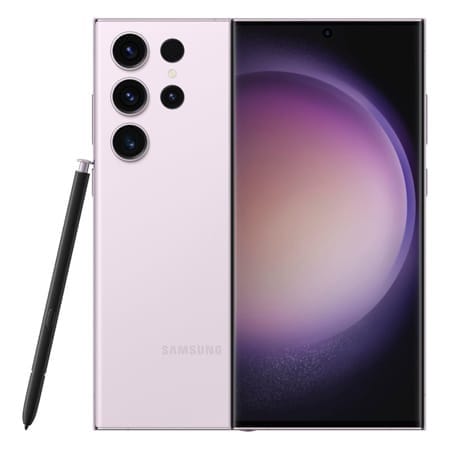
Additionally, 8K video recording will become standard on most flagship smartphones, offering content creators the ability to shoot ultra-high-definition videos with their mobile devices. This will cater to filmmakers, vloggers, and social media influencers who rely on their smartphones for high-quality content creation. With 8K video editing tools built into smartphones, creators will have more control over their work without needing to offload footage to a computer.
5G & Cloud Integration: Instant Backup and Collaboration
With the widespread adoption of 5G, mobile photographers in 2025 will benefit from faster upload speeds and seamless cloud integration. Real-time backups will ensure that no shot is lost, while instantaneous sharing and collaboration across platforms will be easier than ever. Photographers working on projects in different locations can share and edit photos together in real time, leveraging cloud-based tools.

This combination of 5G and cloud technology will redefine the workflow for the mobile photographer, reducing the need for physical storage and allowing for more fluid, collaborative projects.
Summary
The technologies shaping mobile photography in 2025—ranging from computational photography to modular smartphones—are enhancing both the creative and practical capabilities of the mobile photographer. With advancements in sensors, video quality, and connectivity, smartphones will become indispensable tools for capturing professional-quality images, further blurring the line between mobile and traditional photography.
Section 3: Trends in Mobile Photography
Social Media and Short-Form Content: Shaping Photography Styles
One of the most influential trends in mobile photography is the continued rise of social media platforms and their demand for short-form content. Platforms like Instagram, TikTok, and YouTube Shorts have changed the way users create and share images, prioritizing quick, engaging content over more traditional, static photos. This shift has led to an explosion of vertical video formats, encouraging photographers to think about their compositions in new ways.
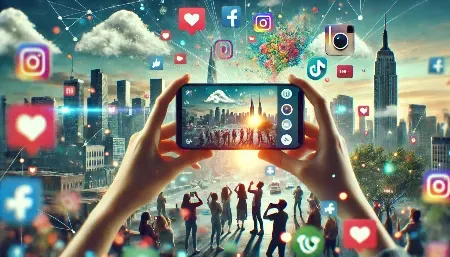
The emphasis on short-form content has also inspired a more spontaneous and creative approach to photography. Mobile photographers are no longer just capturing still images; they are creating dynamic, immersive visual stories that blend photos, video, and creative editing techniques. As a result, photography styles are adapting to these new formats, with trends like stop-motion, hyper-lapse, and cinemagraphs becoming increasingly popular.
For the mobile photographer, mastering these short-form formats will be essential to staying relevant in 2025 as the demand for easily consumable, visually engaging content continues to grow.
Mobile Photographers as Influencers: Building Careers Through Smartphones
In recent years, mobile photography has become a legitimate career path for many, and this trend is expected to continue growing by 2025. The accessibility of high-quality smartphone cameras has leveled the playing field, allowing creators with minimal investment in gear to build substantial followings on platforms like Instagram and TikTok. Influencers who once relied on expensive cameras are now using smartphones to capture professional-level content that resonates with their audiences.
For the mobile photographer, this trend presents an exciting opportunity to leverage their smartphone as both a creative tool and a business asset. Social media platforms have empowered mobile photographers to reach a global audience, build personal brands, and monetize their content through sponsored posts, affiliate marketing, and collaborations with brands.
As more photographers embrace smartphones as their primary device, we will see an increasing number of content creators who identify as mobile photographers first, rather than traditional photographers who use mobile devices on the side.
Augmented Reality (AR) and Mixed Reality (MR): The Future of Visual Storytelling
Augmented Reality (AR) and Mixed Reality (MR) technologies are set to revolutionize the mobile photography landscape by 2025. These technologies allow photographers to blend the physical world with digital elements, creating immersive and interactive experiences. With AR apps already gaining popularity, mobile photographers can overlay digital objects, filters, and effects directly onto their photos and videos in real-time.

As AR and MR capabilities evolve, mobile photographers will be able to experiment with new forms of storytelling. For example, a mobile photographer could capture an image of a cityscape and then use AR tools to add interactive elements, such as floating text, animations, or digital characters that viewers can engage with. These technologies will not only enhance creativity but also open up new avenues for engagement on social media platforms.
AR-driven photography will become especially important for brands and marketers looking to create immersive advertising campaigns. Mobile photographers who can master these new tools will be well-positioned to stand out in an increasingly crowded digital space.
AI-Assisted Creative Tools: Enhancing the Photographer's Workflow
AI-powered tools are already shaping the way mobile photographers work, but by 2025, these technologies will become even more advanced. AI-assisted editing tools will allow photographers to automate time-consuming tasks such as color correction, background removal, and object tracking, giving them more time to focus on the creative aspects of photography. Additionally, AI will continue to improve scene recognition and composition suggestions, helping mobile photographers capture the best possible shot in any situation.
For instance, AI could analyze the lighting conditions and suggest optimal settings, or even adjust exposure and focus dynamically while the photographer is shooting. This will make mobile photography more accessible to beginners, while also providing professionals with new ways to refine their workflow and produce consistently high-quality images.
Summary
In 2025, the trends shaping mobile photography will revolve around social media, AR, and AI, transforming how photographers approach their craft. The rise of short-form content and the influence of social media have created new styles and opportunities for mobile photographers to build careers entirely through their smartphones. Additionally, the integration of AR and AI technologies will further push the boundaries of creative expression, offering innovative tools for storytelling and engagement. For the mobile photographer, staying on top of these trends will be key to thriving in the rapidly evolving world of photography.
Section 4: Challenges & Opportunities for Photographers
Balancing Battery Life and Performance: A Constant Struggle
One of the key challenges mobile photographers face as smartphone camera technology advances is the issue of battery life. With each new feature—whether it's higher resolution sensors, 8K video recording, or advanced computational photography—the demand on a smartphone’s battery grows. For the mobile photographer who spends hours shooting, editing, and sharing images, battery drain can become a significant limitation.

Manufacturers are addressing this problem by optimizing power efficiency and introducing larger batteries, but the gap between performance and battery life still exists. In 2025, battery technology will need to keep pace with the ever-increasing demands of mobile photography. Fast charging solutions and portable power banks help mitigate this issue to some extent, but long photo shoots or video recording sessions may still require careful battery management.
There’s also a trade-off between performance and energy consumption. Mobile photographers often have to choose between using their device at its full potential—such as running the camera in pro mode or using AI-based editing tools—or preserving battery life. As technology advances, innovations like energy-efficient processors or next-generation battery technologies could help solve this issue, but until then, managing battery life remains a daily challenge for the mobile photographer.
Privacy and Security Concerns in Cloud-Connected Photography
The integration of 5G and cloud technologies presents both opportunities and challenges for mobile photographers. On the one hand, cloud-based storage and instant backup make it easier than ever to store, share, and edit images without the need for physical storage. However, this shift toward cloud dependency raises privacy and security concerns.
Uploading personal and professional photos to cloud servers creates potential vulnerabilities. Hackers, data breaches, and unauthorized access can compromise sensitive images or projects, which is a significant concern for both amateur and professional photographers alike. In 2025, mobile photographers must navigate these risks by implementing best practices for cloud security, such as using encryption, enabling two-factor authentication, and choosing trustworthy cloud service providers.
While cloud technologies offer unparalleled convenience, mobile photographers will need to remain vigilant to ensure their work and personal data are secure.
Competition with Traditional Cameras: Finding a Niche
As smartphone camera technology continues to improve, the line between mobile and traditional photography equipment blurs. Flagship smartphones are now capable of producing images that rival entry-level DSLRs and mirrorless cameras, making them a viable option for professional work in certain contexts. However, mobile photographers still face challenges when compared to traditional camera systems, particularly in terms of sensor size, lens versatility, and manual control.
While smartphones offer portability and convenience, they still struggle to compete with dedicated cameras in highly specialized areas like wildlife or sports photography, where long telephoto lenses and rapid burst shooting are crucial. However, this gap is narrowing as smartphone manufacturers innovate with larger sensors and modular camera systems.
For the mobile photographer, this competition with traditional cameras is both a challenge and an opportunity. The challenge lies in convincing clients or audiences that mobile devices are capable of professional-grade work. The opportunity is in finding niches where mobile photography excels—such as travel, street, and social media-focused photography—where convenience and immediacy matter more than ultra-high resolution or complex lens systems.
In 2025, mobile photographers will face both technical and practical challenges, from managing battery life to ensuring data security in a cloud-based world. However, these challenges come with opportunities to explore new niches and capitalize on the ever-growing capabilities of smartphone cameras. With continued advancements in battery technology, cloud security, and camera innovation, mobile photographers will be well-positioned to thrive in the evolving landscape of
Conclusion
As we look ahead to 2025, the world of mobile photography is set to become even more dynamic and innovative. With advancements in computational photography, foldable and modular smartphones, larger sensors, and AI-assisted creative tools, the mobile photographer will have more power and flexibility than ever before. These technological leaps will enable photographers to capture stunning images and videos that rival traditional cameras, all while benefiting from the convenience and accessibility of a smartphone.
However, challenges such as battery life, cloud security, and competition with dedicated cameras remain critical concerns. Mobile photographers must balance the convenience of smartphone photography with the demands of professional-grade performance and secure data handling. Despite these challenges, the opportunities for growth, creativity, and influence are immense.
As trends in social media, augmented reality, and AI continue to evolve, the mobile photographer of 2025 will be uniquely positioned to take advantage of new storytelling techniques and creative possibilities. With a smartphone in hand, the future of photography is both exciting and accessible to photographers of all skill levels.

